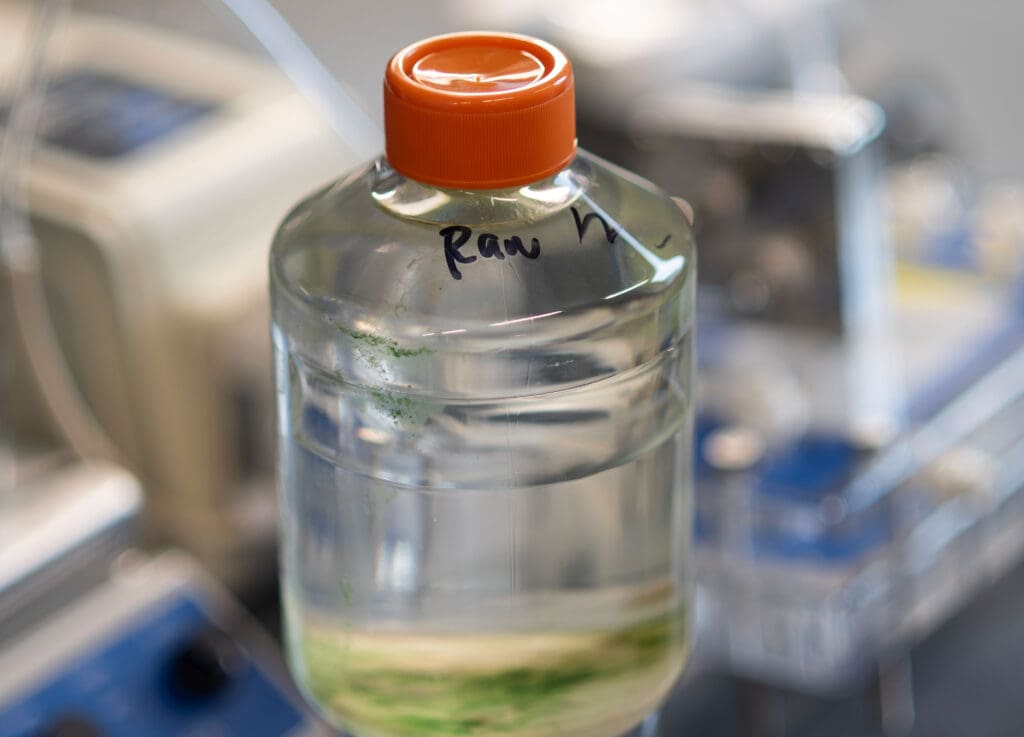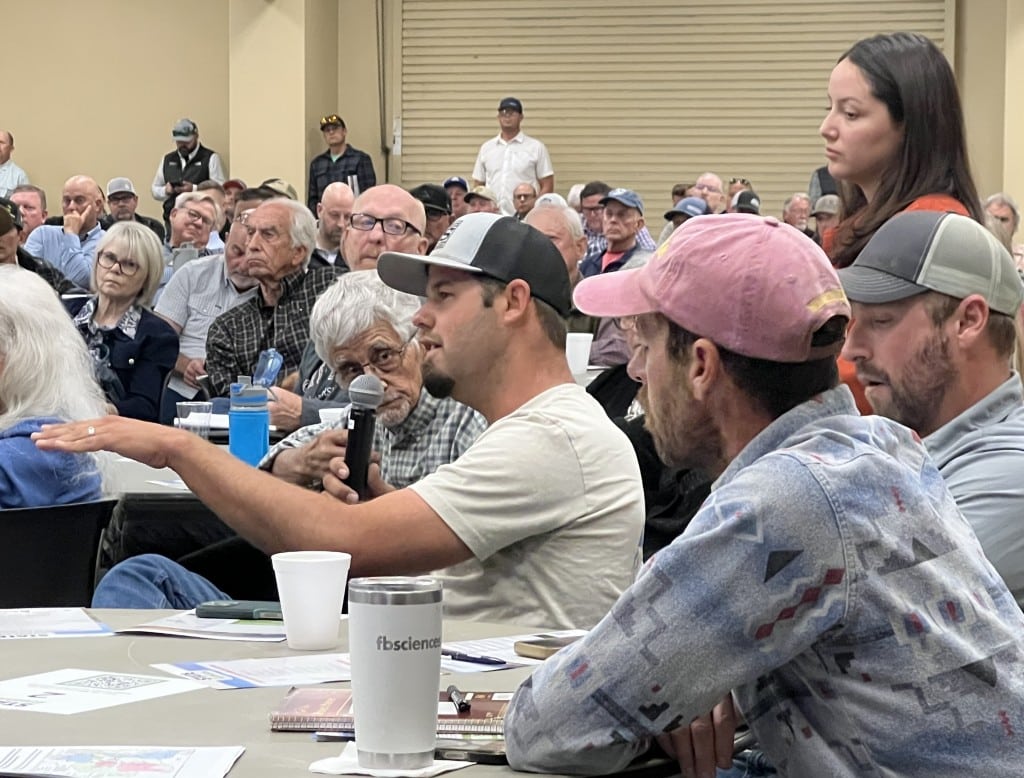Urban Wastewater Directive: AESGP Requests Intervention In EFPIA’s Legal Action – insights.citeline.com

Report on Legal Intervention Concerning the EU Urban Wastewater Directive and Sustainable Development Goals
Introduction: Legal Dispute and its Environmental Context
A significant legal development has emerged concerning the implementation of the revised European Union Urban Wastewater Treatment Directive (UWWTD). The Association of the European Self-Care Industry (AESGP) has submitted a formal request to the EU’s General Court to intervene in a legal action initiated by the European Federation of Pharmaceutical Industries and Associations (EFPIA). This action challenges the directive’s new provisions, which are central to achieving several UN Sustainable Development Goals (SDGs), particularly those related to environmental protection and public health.
Core Issue: Extended Producer Responsibility (EPR) and its Alignment with SDG 12
The central point of contention is the directive’s introduction of an Extended Producer Responsibility (EPR) scheme. This scheme is a direct application of the “polluter pays” principle, a cornerstone of sustainable environmental policy.
- EPR Mandate: The revised UWWTD mandates that producers of pharmaceuticals and cosmetics contribute financially to the costs of advanced “quaternary” treatment required to remove micropollutants from urban wastewater.
- Alignment with SDG 12: This EPR scheme is fundamentally aligned with SDG 12 (Responsible Consumption and Production). It aims to ensure that companies are accountable for the entire lifecycle of their products, including their environmental impact post-consumption. By internalizing the cost of pollution, the directive encourages industries to innovate towards more environmentally benign products.
Stakeholder Actions and Positions
-
EFPIA’s Legal Challenge
EFPIA, representing the research-based pharmaceutical industry, has initiated legal action to annul the EPR provisions within the UWWTD. The challenge raises questions about the legality, proportionality, and implementation of holding pharmaceutical producers financially liable for municipal wastewater treatment upgrades.
-
AESGP’s Request for Intervention
AESGP, which represents producers of non-prescription medicines, food supplements, and self-care medical devices, seeks to intervene in this case. Its involvement underscores the broad impact of the directive across different segments of the healthcare products industry and highlights the need to ensure the final legal interpretation is balanced and workable for all stakeholders involved.
Implications for Sustainable Development Goals
The outcome of this legal dispute will have profound implications for the EU’s progress towards its environmental commitments and the SDGs.
SDG 6: Clean Water and Sanitation
The primary objective of the UWWTD is to protect water bodies from the adverse effects of wastewater discharges, directly contributing to SDG 6 (Clean Water and Sanitation). Key impacts include:
- Target 6.3: By 2030, improve water quality by reducing pollution, eliminating dumping, and minimizing the release of hazardous chemicals and materials. The directive’s focus on removing micropollutants like pharmaceutical residues is critical to achieving this target.
- Protecting Water Resources: The EPR scheme provides a funding mechanism to implement the advanced technologies needed to safeguard Europe’s water resources for drinking, sanitation, and ecosystem health.
SDG 14: Life Below Water & SDG 3: Good Health and Well-being
The directive’s impact extends to other interconnected goals:
- SDG 14 (Life Below Water): Reducing the discharge of pharmaceutical micropollutants into rivers and seas is essential for protecting aquatic ecosystems from chemical pollution and preserving marine biodiversity.
- SDG 3 (Good Health and Well-being): While ensuring access to essential medicines (Target 3.8), it is equally important to manage their environmental footprint to prevent potential long-term health risks associated with contaminated water and the rise of antimicrobial resistance (AMR).
SDG 17: Partnerships for the Goals
This legal case exemplifies the complexities of SDG 17 (Partnerships for the Goals). It highlights the tension between industrial interests and public environmental objectives. A successful resolution, whether through judicial decision or subsequent policy refinement, will require robust dialogue between EU institutions, member states, and the private sector to establish a fair and effective framework for shared responsibility in environmental protection.
Analysis of Sustainable Development Goals (SDGs) in the Article
-
Which SDGs are addressed or connected to the issues highlighted in the article?
The article on the EU’s Urban Wastewater Directive and the related legal challenges touches upon several interconnected Sustainable Development Goals. The primary focus on wastewater treatment directly links to goals concerning water, health, sustainable cities, and ecosystems.
-
SDG 6: Clean Water and Sanitation
This is the most relevant SDG. The article’s central theme is the “revised EU Urban Wastewater Directive,” which is fundamentally about managing and treating wastewater to ensure water quality and sanitation. The directive’s aim to remove micropollutants directly supports the goal of providing clean water.
-
SDG 3: Good Health and Well-being
The directive’s requirement to remove “micropollutants” from pharmaceutical and cosmetic products addresses the health risks associated with water contamination. By reducing the presence of these hazardous substances in water bodies, the directive contributes to preventing illnesses caused by water pollution.
-
SDG 11: Sustainable Cities and Communities
The policy is explicitly named the “Urban Wastewater Directive,” highlighting its focus on managing waste within cities and urban agglomerations. Effective wastewater management is a critical component of sustainable urban infrastructure and reducing the environmental footprint of cities.
-
SDG 12: Responsible Consumption and Production
The article mentions that the directive introduces an “Extended Producer Responsibility (EPR) scheme.” This “polluter pays” principle, which requires pharmaceutical and cosmetics companies to finance the removal of their products’ residues from wastewater, directly promotes sustainable production patterns by holding producers accountable for the entire life-cycle of their products.
-
SDG 14: Life Below Water
Urban wastewater is a significant source of land-based pollution that flows into rivers and ultimately the sea. By mandating advanced “quaternary treatment” to remove micropollutants, the directive aims to protect freshwater and marine ecosystems from chemical pollution, thus preserving life below water.
-
-
What specific targets under those SDGs can be identified based on the article’s content?
The article’s content allows for the identification of several specific SDG targets that the Urban Wastewater Directive aims to achieve.
-
Target 6.3
“By 2030, improve water quality by reducing pollution, eliminating dumping and minimizing release of hazardous chemicals and materials, halving the proportion of untreated wastewater…” The directive’s core purpose is to improve water quality by implementing advanced treatment processes (“quaternary treatment”) to reduce pollution from “micropollutants,” which are hazardous chemicals from pharmaceuticals and cosmetics.
-
Target 3.9
“By 2030, substantially reduce the number of deaths and illnesses from hazardous chemicals and air, water and soil pollution and contamination.” By targeting the removal of micropollutants from the water supply, the directive directly contributes to reducing human exposure to hazardous chemicals through contaminated water, thereby preventing related illnesses.
-
Target 11.6
“By 2030, reduce the adverse per capita environmental impact of cities, including by paying special attention to… municipal and other waste management.” The directive is a key policy instrument for improving municipal wastewater management in urban areas, thus reducing the environmental impact of cities.
-
Target 12.4
“By 2020, achieve the environmentally sound management of chemicals and all wastes throughout their life cycle… and significantly reduce their release to air, water and soil…” The introduction of the “Extended Producer Responsibility (EPR) scheme” is a mechanism for the environmentally sound management of waste derived from pharmaceutical and cosmetic products, aiming to reduce their release into water.
-
Target 14.1
“By 2025, prevent and significantly reduce marine pollution of all kinds, in particular from land-based activities…” The treatment of urban wastewater before it is discharged is a critical measure to prevent land-based pollutants, including chemical micropollutants, from reaching and harming marine environments.
-
-
Are there any indicators mentioned or implied in the article that can be used to measure progress towards the identified targets?
While the article does not provide quantitative data, it implies several key indicators that can be used to measure the implementation and effectiveness of the directive.
-
Indicator for Target 6.3
The article implies an indicator related to the level of wastewater treatment. The mention of “quaternary treatment” as a requirement to remove micropollutants suggests that progress can be measured by the proportion of urban wastewater undergoing advanced (quaternary) treatment. This is a direct measure of action taken to improve water quality.
-
Indicator for Target 12.4
The article provides a specific, measurable indicator related to producer responsibility. It states that the EPR scheme will “require pharmaceutical and cosmetics companies to pay for at least 80% of the cost of the additional treatment.” Therefore, a clear indicator is the percentage of advanced water treatment costs covered by producers under the EPR scheme. This measures the implementation of the “polluter pays” principle.
-
Summary of SDGs, Targets, and Indicators
| SDGs | Targets | Indicators (Mentioned or Implied in the Article) |
|---|---|---|
| SDG 6: Clean Water and Sanitation | Target 6.3: Improve water quality by reducing pollution and minimizing the release of hazardous chemicals. | Proportion of urban wastewater receiving advanced “quaternary treatment” to remove micropollutants. |
| SDG 3: Good Health and Well-being | Target 3.9: Substantially reduce illnesses from water pollution and contamination. | Implementation of policies (the Urban Wastewater Directive) to remove hazardous micropollutants from water. |
| SDG 11: Sustainable Cities and Communities | Target 11.6: Reduce the adverse per capita environmental impact of cities, focusing on municipal waste management. | Enforcement of the Urban Wastewater Directive as a measure of improved municipal waste management. |
| SDG 12: Responsible Consumption and Production | Target 12.4: Achieve environmentally sound management of chemicals and all wastes throughout their life cycle. | Percentage of advanced water treatment costs (at least 80%) covered by pharmaceutical and cosmetics companies under the Extended Producer Responsibility (EPR) scheme. |
| SDG 14: Life Below Water | Target 14.1: Prevent and significantly reduce marine pollution from land-based activities. | Reduction in the discharge of untreated or insufficiently treated urban wastewater into water bodies that lead to the sea. |
Source: insights.citeline.com

What is Your Reaction?
 Like
0
Like
0
 Dislike
0
Dislike
0
 Love
0
Love
0
 Funny
0
Funny
0
 Angry
0
Angry
0
 Sad
0
Sad
0
 Wow
0
Wow
0















































































